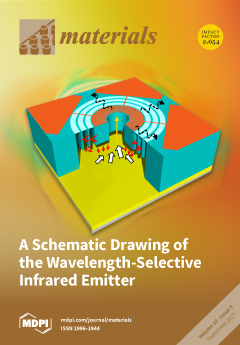Open AccessArticle
Formation Mechanism of Spherical TiC in Ni-Ti-C System during Combustion Synthesis
by
Guoliang Zhu 1,2, Wei Wang 1,2, Rui Wang 1,2, Chuanbao Zhao 1,2, Weitao Pan 2, Haijun Huang 1,2, Dafan Du 1,2, Donghong Wang 1,2, Da Shu 1,2,*, Anping Dong 1,2,*, Baode Sun 1,2,3,4, Sheng Jiang 5 and Yilong Pu 5
1
Shanghai Key Lab of Advanced High-Temperature Materials and Precision Forming, Shanghai Jiao Tong University, Dongchuan Road 800, Shanghai 200240, China
2
School of Materials Science and Engineering, Shanghai Jiao Tong University, Dongchuan Road 800, Shanghai 200240, China
3
State Key Laboratory of Metal Matrix Composites, Shanghai Jiao Tong University, Dongchuan Road 800, Shanghai 200240, China
4
Collaborative Innovation Center for Advanced Ship and Deep-Sea Exploration, Shanghai Jiao Tong University, Dongchuan Road 800, Shanghai 200240, China
5
Jiangsu Longda Superalloy Material Co., Ltd, Wuxi 214105, China
Cited by 23 | Viewed by 4840
Abstract
The formation mechanism of TiC particles in a Ni-Ti-C system were revealed by using differential thermal analysis (DTA), XRD, and SEM to identify the reaction products in different temperature ranges. The results indicated that the synthesis mechanism of TiC in Ni-Ti-C system was
[...] Read more.
The formation mechanism of TiC particles in a Ni-Ti-C system were revealed by using differential thermal analysis (DTA), XRD, and SEM to identify the reaction products in different temperature ranges. The results indicated that the synthesis mechanism of TiC in Ni-Ti-C system was complex; several reactions were involved in the combustion synthesis of TiC-Ni composite. The Ni-Ti intermediate phases play important roles during the formation of TiC. Moreover, the influence of heating rate on the size range of TiC was also discussed.
Full article
►▼
Show Figures






